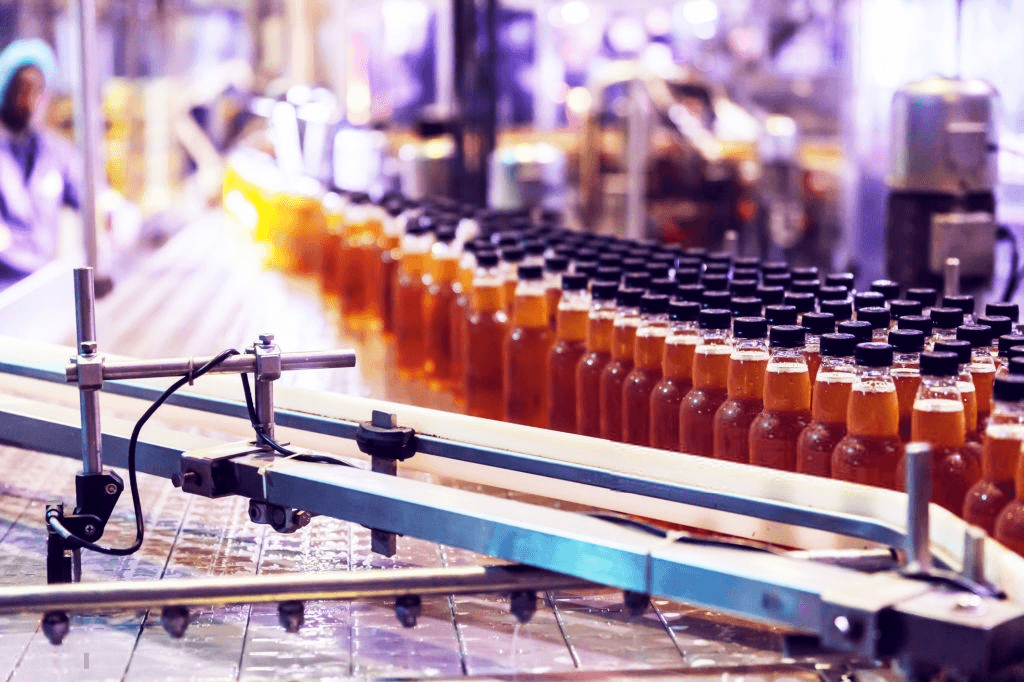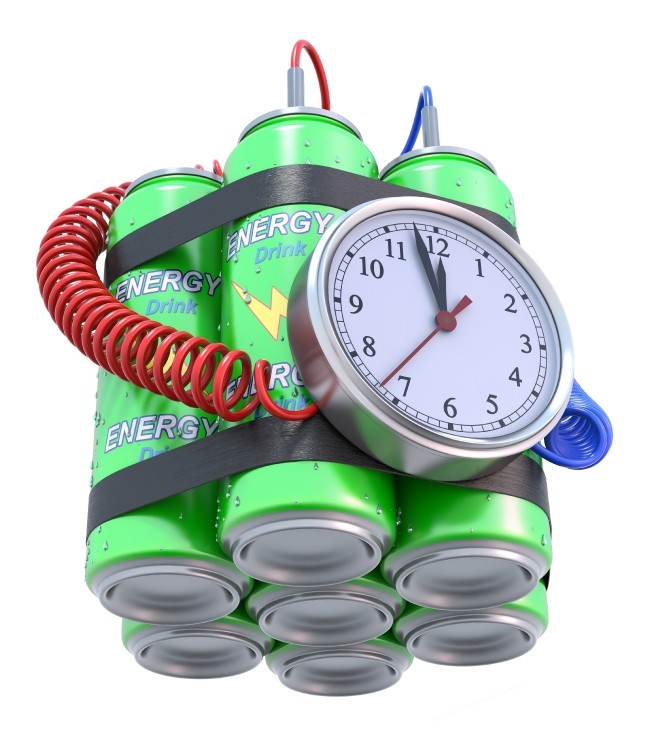The Truth About Energy Drinks

Everyone needs a quick pick-me-up now and then, but are we becoming a nation of energy addicts? So it would seem, based on skyrocketing sales of caffeine-infused products. Today’s 24/7 culture, long work hours and poor sleep habits drain stamina and encourage us to guzzle liquid pep to combat daily sluggishness. Energy drinks, with edgy names and catchy slogans, have captured the youth market, igniting sales—and side effects (Seifert et al. 2011).
Energy beverages can invigorate consumers with a combination of sugar, caffeine and other ingredients, but they are also inviting increased public and medical scrutiny thanks to a plethora of reports linking their consumption to serious secondary effects and even deaths (Blankson et al. 2013). Energy drinks can cause significant health problems if consumed in large amounts or by certain populations.
Caffeine, the major ingredient, has been used for decades as a safe ergogenic aid, yet reports suggest it is causing many of these adverse effects. An avalanche of conflicting information has left many fitness professionals puzzling over how to advise clients on the risks and benefits of caffeinated energy boosters. This article highlights the latest information about energy drinks and their kin, providing strategies to support their safe consumption.Jazzed on Drinks
Taisho Pharmaceuticals invented the first energy drink, Lipovitan D, a half-century ago (Meier 2013) to help night employees stay awake. Still available today, Lipovitan D counts taurine, B vitamins, nicotine and caffeine among its ingredients. In the 1980s, super-caffeine-infused Jolt® Cola became a hit on college campuses. Red Bull®, the king of today’s market, was introduced to the United States in 1997 (Meier 2013). Since then, hundreds of energy products, from beverages to candy, have flooded the market, promising increased focus and physical agility.
The alertness industry is big business, with energy drinks and shots netting $12.5 billion in 2012, a 60% jump from 2006 (Meier 2013; Packaged Facts 2013). Energy drink manufacturers see teens and college students as their biggest customers, with 30%–50% of this age group regularly consuming energy drinks to lift mental fog and boost athletic performance (Seifert et al. 2011). Shrewd marketing catapults the popularity of these drinks by enticing young males, in particular, with the assurance of gaining a competitive edge. Young consumers cite sleep deprivation, peer pressure, need for energy and sports performance as reasons for gulping energy brews (Taddeo, Harvey & Boutin 2012).Safe or Scary?
The U.S. Food and Drug Administration is investigating unconfirmed reports of 13 deaths and various adverse events allegedly linked to energy products (FDA 2012a; FDA 2012b). While some drinks serve up moderate levels of caffeine and B vitamins in 8- to 24-ounce cans, there are also high-octane varieties called energy shots, which cram excessive doses of caffeine and B vitamins into 2-ounce servings and have been linked to numerous health complications (FDA 2012a).

Energy drinks have been associated with seizures, headaches, rapid heart rate, chest pains, irritability and anxiety (Iyadurai & Chung 2007). New-onset seizures are linked to heavy consumption (>24 ounces) on an empty stomach or if combined with another high-caffeine product (Iyadurai & Chung 2007). Deaths and other serious events occurred in children (Bronstein et al. 2011) and teens with pre-existing cardiac conditions (Meier 2012).
Combining energy drinks with alcohol is a hazardous college trend (Marczinski 2011). This duo can mask alcohol’s sedative effect, and each raises dopamine levels, stimulating the desire to drink both (Greenemeier 2010). College students with a history of consuming this volatile mixture are more likely to participate in or be the victim of risky behaviors (Howland & Rohsenow 2013).But Don’t They Boost Performance?
Energy drinks are frequently used to increase athleticism. In a survey of U.S. college students (Hoyte, Albert & Heard 2013), 80% of those who said they participated in sports at various levels reported having used an energy drink within the past year to enhance athletic performance. Among sports players, 84% men and 74% of women said they consumed energy drinks. Semipro and intercollegiate players were more likely to use energy drinks than their intramural and club peers.
The International Society of Sports Nutrition’s (Campbell et al. 2013) position paper on energy drinks states that the ergogenic value of caffeine is well supported. Energy drinks can improve mental focus and anaerobic and/or endurance performance if consumed 10–60 minutes before exercise, the paper states, but it adds that many energy drinks contain additional ingredients whose benefits or other effects are not yet known. Low-calorie energy beverages may help with weight loss, but sugary energy drinks may incite weight gain and spike insulin levels (Campbell et al. 2013).
Athletes should consider the high sugar concentration when selecting an energy drink. Children and adolescents should use energy drinks only under parental supervision and be able to recognize the side effects. Indiscriminant use is not recommended. People with diabetes, cardiovascular disease or other metabolic or physical disorders should avoid energy drinks (Campbell et al. 2013).
What is it about energy drinks that produces negative health effects? Most point the finger at caffeine, but is this generally recognized as safe (GRAS) ingredient the culprit?The Buzz on Caffeine
Caffeine is a central nervous system stimulant that is easily absorbed; blood values peak within an hour after ingestion. The half-life of caffeine is 5–12 hours, but alcohol will extend its stay in the body (Campbell et al. 2013). Most adult men and nonpregnant women can tolerate 500 milligrams a day (about four or five 8-ounce cups of coffee) without significant side effects (Sepkowitz 2013). Children may experience caffeine-induced irritability, anxiety, cardiac abnormalities and sleep issues with lower doses, so their caffeine intake should be <100 mg/day (Torpy & Livingston 2013; Health Canada 2011). Highly caffeinated energy drinks have no place in the diets of children or adolescents, according to the Committee on Nutrition and the Council on Sports Medicine and Fitness (2011).
Caffeine is frequently used as an ergogenic aid despite its diuretic effect. >> Consumed 45–60 minutes prior to anaerobic exercise, energy drinks containing about 2 mg of caffeine per kilogram of body mass may improve total lifting, but they have no effect on repeated high-sprint or agility performance (Davis & Green 2009; Campbell et al. 2013). However, performance may improve if caffeine is consumed 10–40 minutes before an aerobic activity such as cycling or running (Campbell et al. 2013). Sugar-free versions of energy drinks produced no improvement in high-intensity run time to exhaustion in young adults (Candow et al. 2009).
The FDA limits caffeine in soft drinks to 71 mg per 12 ounces, but it does not regulate caffeine in dietary supplements like energy drinks or products. Supplement manufacturers must list caffeine in the ingredients but do not need to list actual quantities (Rath 2012). Energy beverages contain different amounts of caffeine, and the quantities listed on labels are often inaccurate (Consumer Reports 2012; Blankson et al. 2013).
Many energy drinks contain guarana, a South American botanical packed with 40 mg of caffeine per gram. Caffeine from guarana is not typically included in the caffeine tally listed on energy drink labels (Blankson et al. 2013).
Caffeine-infused candy, chewing gum, marshmallows, Cracker Jack®, energy sheets that dissolve on the tongue and potato chips have inundated today’s market. Ingesting caffeine from multiple sources throughout the day can add up, triggering insomnia, irritability, rapid heartbeat and anxiety (Wolk, Ganetsky & Babu 2012).
